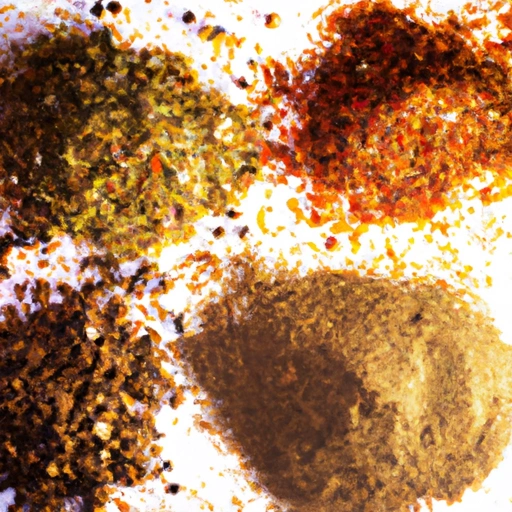Seasoning
Description

Seasoning is a vital element in cooking and gastronomy, crucial for enhancing and bringing out the natural flavors of food. It encompasses a wide range of spices, herbs, salts, and flavorings that chefs and home cooks alike use to transform and elevate dishes. From the simplicity of salt and pepper to complex spice blends, seasoning adjusts not only the taste but also the aroma and visual appeal of meals.
Common uses
Seasonings are used to enhance the flavor of meats, vegetables, soups, and desserts. They may be applied during cooking or at the table, and are often used in marinades, rubs, dressings, and sauces.
Nutritional value
Calories
Caloric content of seasonings varies widely depending on the type. Many herbs and spices contain minimal calories, making them excellent for flavoring food without adding significant energy.
Protein
Protein levels in seasonings are generally low, though some seeds and nuts used as seasonings can contribute modest amounts.
Fat
Fats are typically negligible in most herbs and spices, but certain seeds and nuts used for seasoning may contain higher levels of healthy fats.
Carbohydrates
Carbohydrates in seasoning can come from natural sugars in dried spices and herbs, but are usually consumed in small amounts, therefore not contributing significantly to the daily intake.
Vitamins
Many seasonings are rich in vitamins, especially certain herbs and spices which can be excellent sources of vitamins A, C, and K.
Minerals
Minerals such as calcium, iron, and magnesium can be found in various herbs and spices, contributing to their health benefits.
Health benefits
Seasonings can contribute to health by providing antioxidants, aiding in digestion, and even possessing anti-inflammatory properties. Utilizing a variety of seasonings can help reduce sodium intake by allowing for less salt to be used without compromising flavor.
Potential risks
Overuse of certain seasonings, particularly high-sodium salt mixes, can lead to health issues such as hypertension. Some individuals may also experience allergic reactions or intolerance to specific herbs and spices.
Common recipes
Seasonings are integral to recipes around the world, from the curry powders used in Indian cuisine to the herbes de Provence in French dishes. They are adaptable to countless recipes, both traditional and innovative.
Cooking methods
Seasonings may be added at various stages of cooking. Some are best when heated to release their flavors, while others are sprinkled on as finishing touches.
Pairing with other ingredients
Pairing seasonings with food is an art form. For example, basil pairs beautifully with tomatoes, cumin enhances the earthiness of beans, and cinnamon is perfect for sweetening desserts.
Summary
Seasoning is a cornerstone of culinary arts, with its historical roots impacting global trade and culture. It continues to be an invaluable tool for adding depth and complexity to dishes. While providing nutritional benefits, it is important to use seasonings in moderation to avoid potential risks. Seasonings not only embellish a variety of recipes but also encourage culinary creativity and exploration.